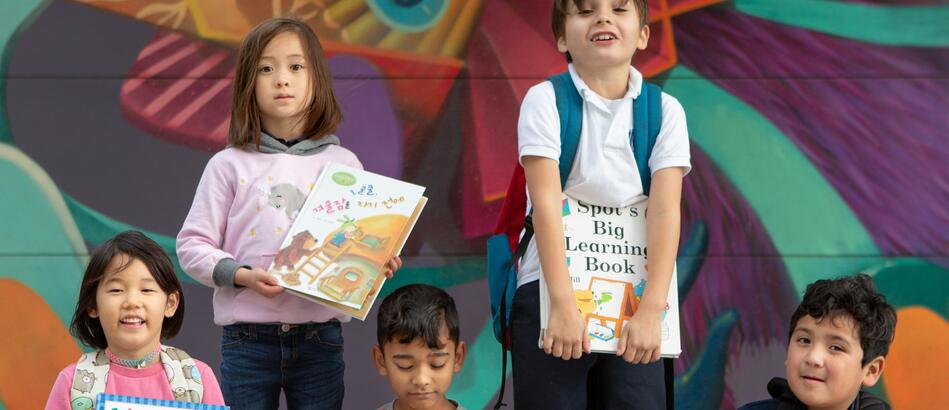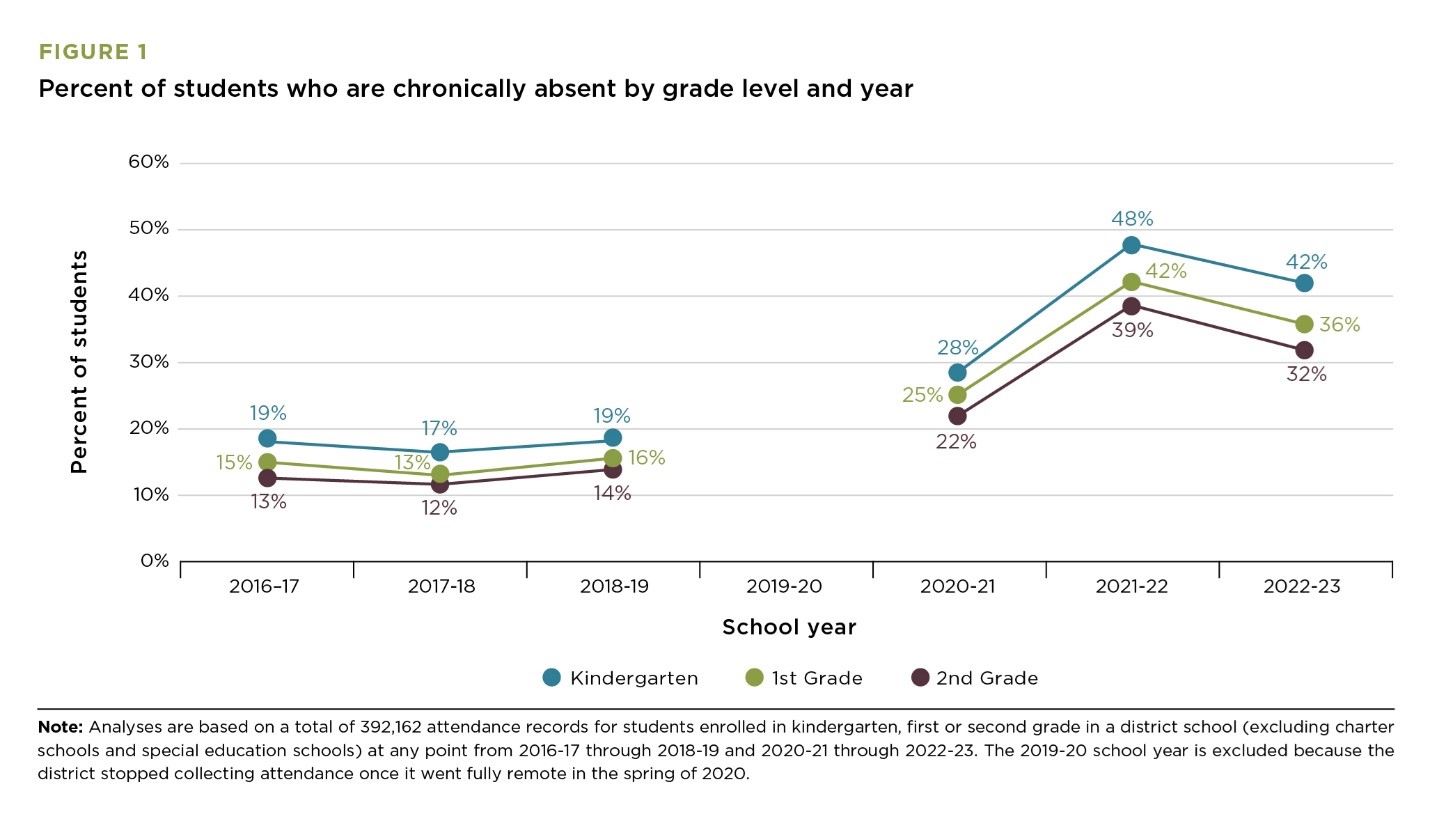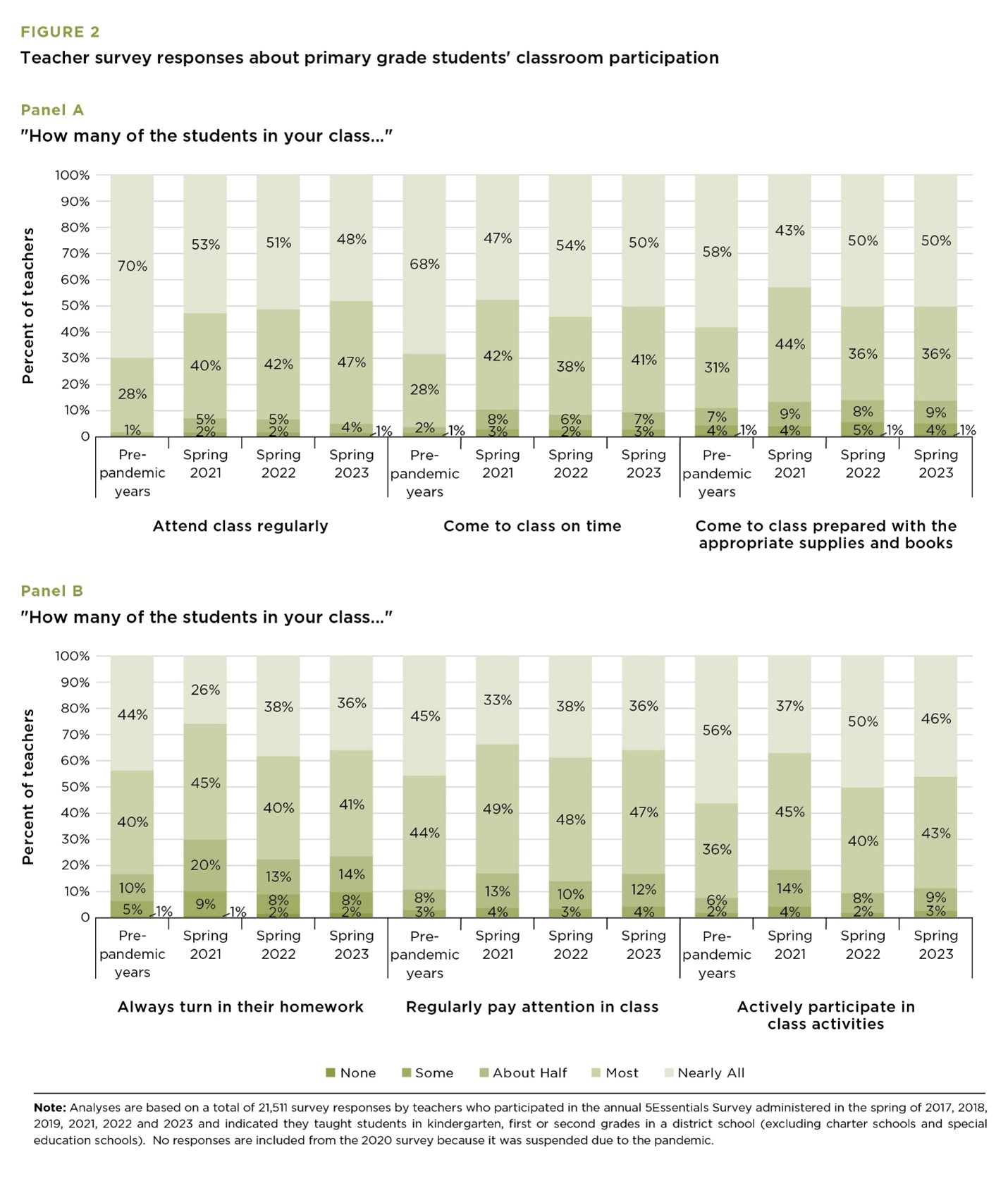
The sudden onset of a global pandemic in March 2020 created unprecedented challenges for all students, their families and their teachers. For students in the primary grades, the switch to remote learning may have been particularly difficult and highly consequential for their academic development. To assess how Chicago Public School (CPS) students in kindergarten through 2nd grade fared in school during the remote/hybrid year (2020-21) and the first two years of pandemic recovery (2021-22 and 2022-23), researchers at the University of Chicago Consortium on School Research examined two types of indicators of student engagement in schools: district records of daily attendance and responses by CPS teachers to questions about student participation in primary grade classrooms from the 5Essentials Survey.
Students in the primary grades missed out on important opportunities for academic and social development during the remote/hybrid school year (2020-21).
The 2020-21 school year began with all students learning from home. In late winter 2021, schools began transitioning to hybrid learning, with pre-k programs providing some in-person schooling in February, elementary grades in March, and high schools in April. Throughout this period, the district capped the amount of time that primary grade students were expected to spend online in synchronous learning at 180 minutes per day, appropriate given their young ages but less instruction than they would have otherwise received in a typical year (300 minutes per day). Combined with physical separation from teachers and peers, the remote learning experience curtailed opportunities for social and behavioral development in addition to academic development for these students. Students returned to in-person learning in the 2021-22 school year, but with frequent disruptions from new outbreaks, and protocols that asked them to stay home from school if they showed any signs of sickness.
Chronic absenteeism increased during the remote/hybrid school year (2020-21) and was even higher during the subsequent two years (2021-22 and 2022-23).
Given that the youngest learners spent considerably less time in school during the remote/hybrid year, a return to in-person instruction was critical for them. But absences during the first recovery year were even higher than during the remote year. Figure 1 shows that in Chicago, the percent of students in kindergarten through second grade who were chronically absent increased by 9 to 10 percentage points during the remote/hybrid year (2020-21) and another 17 to 20 percentage points the following year when students returned to fully in-person school (2021-22). Chronic absenteeism dropped by 6 to 7 percentage points the following year (2022-23) but remained well above what it had been in pre-pandemic years, with more than twice as many K2 students chronically absent.

While most teachers reported student engagement in the classroom remained high during and after the remote/hybrid year (2020-21), a small group reported fewer students were completing their homework than the before the pandemic.
Attendance is only one indicator of student engagement. Annual survey responses provide a unique look at teacher perspectives on student engagement in the classroom. More than 80 percent of teachers reported that most or nearly all their students came to class regularly and on time, were prepared with the appropriate supplies, paid attention and actively participated in class activities during the remote/hybrid year (Spring 2021), and also during the two years that followed (Spring 2022 and 2023; see Figure 2). Nevertheless, for a small group of teachers, some aspects of student engagement declined considerably during the remote/hybrid year 2021, including homework completion and classroom participation: the percent of teachers who reported that “None”, “Some” or only “About Half” of their students engaged in these activities increased by at least 10 percentage points in 2021 compared to pre-pandemic years, highlighting some of the challenges of teaching and learning in a remote environment. By 2023, teacher responses still indicated that homework completion remained an issue in at least some classrooms, with around a quarter of respondents saying that no more than half of their students always turned in their homework (8 percentage points higher than in pre-pandemic years).

Post-pandemic learning acceleration may be further supported by a focus on improving student attendance.
Since the return to in-person schooling, districts and schools have invested in many new supports to accelerate student learning. But student attendance has not returned to what it was previously, and other aspects of student engagement, such as homework completion, may also lag behind, presenting challenges for academic recovery. Organizations like Attendance Works and What Works Clearinghouse provide information about research-based strategies that schools can use to improve attendance and overall student engagement. An important first step may be assessing the needs of parents within a school community, since parents play a key role in supporting engagement of students in the primary grades, particularly around school attendance and homework completion. Many parents still grapple with the aftermath of the pandemic, and understanding the challenges they face can jumpstart a school-wide approach to providing support and promoting engagement.
Julia A. Gwynne is a Senior Research Scientist at the University of Chicago Consortium on School Research. Her research spans a range of areas including, student engagement in schools, Common Core State Standards, high school graduation rates, early warning indicators, school closings, charter high schools, and preschool attendance. Across these areas, she is principally interested in identifying the academic skills and behaviors students need to be successful in their current grade level and beyond. She is also interested in how district policies support the ongoing development of high-quality instructional practice.
